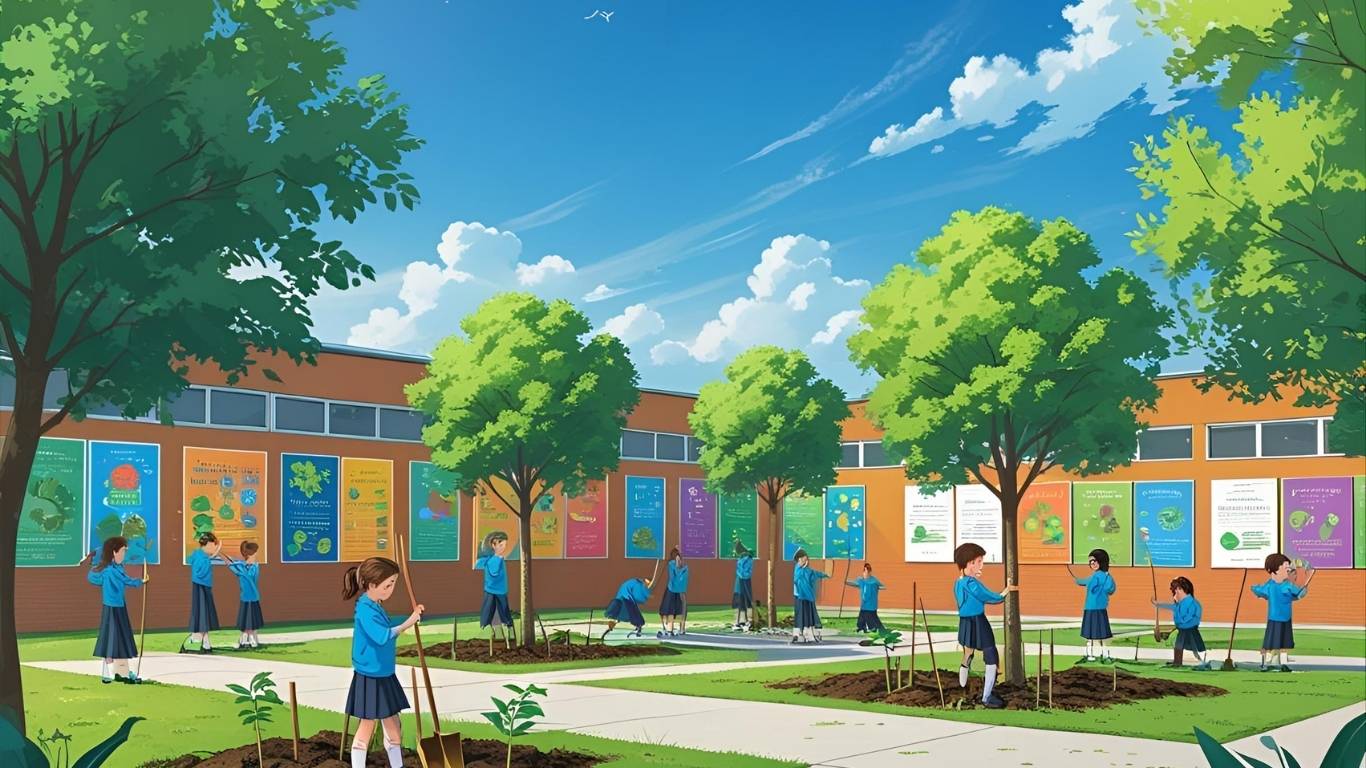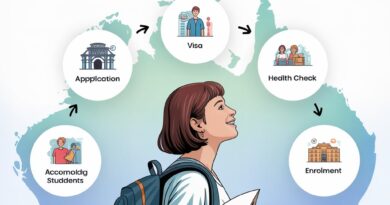Green Education: Sustainability in School Curricula
Introduction
The planet is in crisis—and the solution begins in the classroom. With climate change, pollution, and biodiversity loss becoming more pressing than ever, education has taken center stage in empowering the next generation to make a difference. Welcome to the era of green education, where sustainability isn’t just a topic—it’s a mindset.
What Is Green Education?
Green education, or sustainability education, is more than planting trees or teaching recycling. It’s a holistic approach that weaves ecological awareness, sustainable thinking, and environmental responsibility into every subject, activity, and decision-making process in school. It evolved from traditional environmental education, expanding its focus to include economic, cultural, and social dimensions of sustainability.
At its core, green education is about living in harmony with the planet—and preparing students to thrive in a world that desperately needs eco-conscious leadership.
Why Sustainability in School Curricula Matters
Let’s be real: the planet won’t fix itself. And the truth is, today’s youth will inherit the environmental problems we leave behind.
By embedding sustainability in school curricula, we’re:
- Raising environmentally literate citizens who understand the issues.
- Aligning with UN Sustainable Development Goals (SDGs), especially Goal 4.7, which emphasizes education for sustainable development.
- Helping students develop the skills to solve real-world problems, from climate action to food security.
Key Components of a Green Curriculum
Environmental Literacy
Students should grasp the interconnectedness of ecosystems, the role humans play, and the consequences of inaction. Think: biodiversity, pollution, climate, water cycles.
Energy and Resource Conservation
How energy is produced, how it’s consumed, and why turning off that light switch matters.
Climate Change Education
Understanding the science of climate change, its global impact, and how to reduce carbon footprints.
Waste Management and Recycling
Teaching the 5 R’s: Refuse, Reduce, Reuse, Repurpose, and Recycle—along with practical applications at school.

Integrating Sustainability Across Subjects
Who says sustainability can’t be fun and interdisciplinary?
Science
Perfect for environmental experiments, biodiversity studies, and renewable energy projects.
Math
Crunch the numbers on water consumption, energy bills, and carbon footprints—yes, real-life data!
Geography
Explore how deforestation, climate, and urbanization shape our world.
Literature and Language
Read and write stories that touch hearts and change minds. Think eco-poetry, climate fiction, and environmental debates.
Project-Based Learning in Green Education
Theory is cool. Action is cooler. That’s where project-based learning shines.
School Gardens
Kids get their hands dirty planting herbs, learning about soil, and seeing the food cycle in real time.
Recycling Initiatives
From bottle banks to compost bins, recycling projects teach responsibility and teamwork.
Eco-Clubs and Green Ambassadors
Student-led eco groups empower youth to lead campaigns, organize cleanups, and spread awareness.
Role of Teachers in Green Education
Teachers are the backbone of any curriculum. For green education, they need:
- Sustainability training and resources
- Opportunities to collaborate and co-create lesson plans
- Encouragement to lead by example—whether that’s using less paper or biking to work
Benefits of Green Education
Here’s what schools and students gain:
- Eco-conscious mindsets and lifelong habits
- Critical thinking and innovation through real-world problem solving
- Community connection and pride from local initiatives
- Improved student well-being through outdoor and hands-on learning
Challenges in Implementing Green Education
Of course, it’s not all sunshine and solar panels. Challenges include:
- Outdated curricula that lack space for new topics
- Limited budgets for green infrastructure or training
- Pushback from stakeholders resistant to change
- Unequal access, especially in rural or underserved regions
Government and Policy Support
Thankfully, many governments are waking up. National policies and global frameworks (like UNESCO’s Education for Sustainable Development) are pushing schools toward sustainability. Grants, green certifications, and curricular guidelines can make a big difference.
Technology in Green Education
EdTech isn’t just about Zoom calls and iPads.
- Augmented reality can simulate climate change scenarios.
- Online platforms offer courses, challenges, and global green school networks.
- Carbon footprint calculators help kids visualize their impact.
Sustainable School Infrastructure
You can’t teach sustainability in a leaky, energy-wasting school. Time to walk the talk.
- Solar panels and LED lighting
- Rainwater harvesting
- Zero-waste cafeterias
- Recycled materials in furniture and supplies
Involving Parents and Communities
Green learning doesn’t stop at the school gate.
- Encourage family eco-challenges like waste-free lunches.
- Launch community cleanups and tree-planting drives.
- Organize green fairs to showcase student projects and engage locals.
Case Studies Around the World
Finland
Their schools integrate nature deeply—from forest classrooms to nature walks tied into science and language learning.
Japan
With a strong sense of community, schools conduct daily cleanups and environmental stewardship activities.
India
Eco Clubs supported by the Ministry of Environment engage students in local sustainability campaigns, biodiversity drives, and water-saving efforts.
Conclusion
Green education is not a trend—it’s a necessity. It’s how we plant the seeds of sustainability in the minds of young learners. Schools aren’t just preparing students for jobs—they’re preparing them to inherit and protect the only home we’ve got.
Whether you’re a teacher, parent, policymaker, or student, you have a role to play. The future is green—and it starts with education.
FAQs
1. What are the objectives of green education?
To foster environmental awareness, sustainable living habits, and empower students to take meaningful action on ecological issues.
2. How can schools integrate sustainability without overloading the curriculum?
By embedding it across existing subjects and through project-based learning—making sustainability part of how we learn, not just what we learn.
3. Are there any certifications for green schools?
Yes, examples include LEED for Schools, Green Flag Award, and Eco-Schools certification.
4. Can green education be introduced in under-resourced schools?
Absolutely. Even simple steps like waste segregation, growing plants in recycled containers, and nature walks can be impactful.
5. How does green education prepare students for the future?
It equips them with 21st-century skills—critical thinking, collaboration, problem-solving—and the environmental values necessary for a sustainable future.



